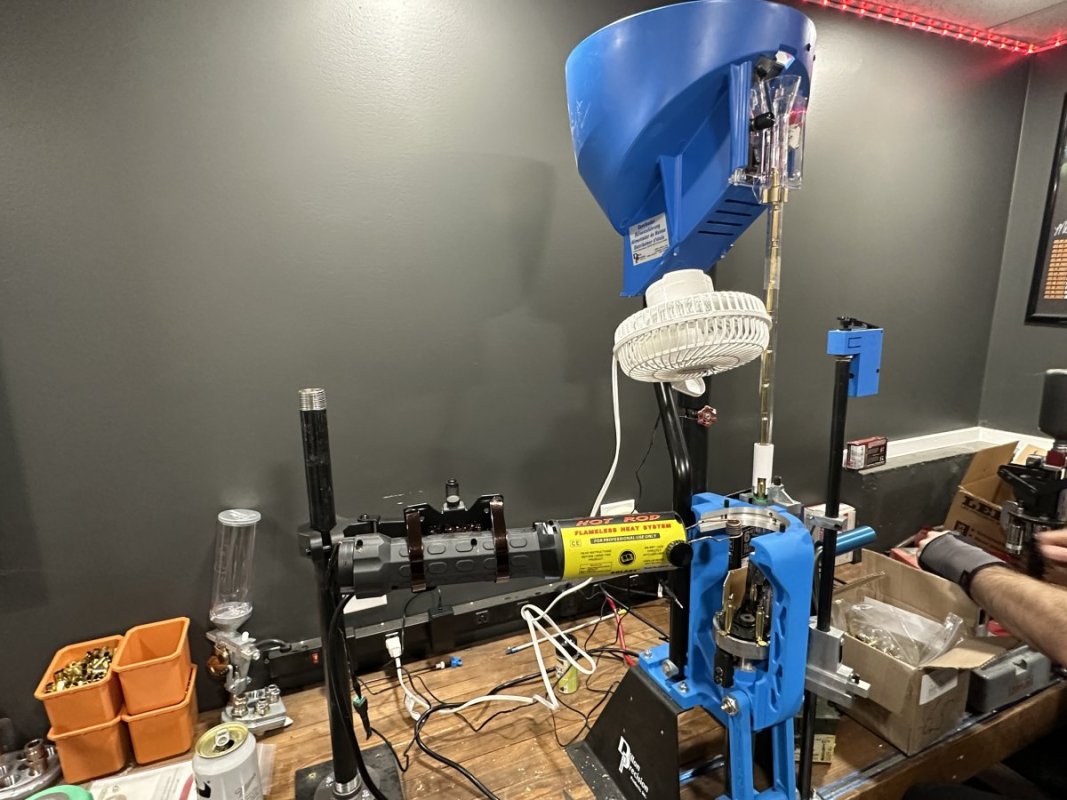Roger that, but if they are annealed at the factory then why would they need to be annealed again?The necks on all rifle brass is annealed at the factory (maybe handgun also, not sure about that, but likely). The difference between the 5.56 and .223 is that you can see the annealing on the 556 but 223 and certain 556 brass has the annealing stains polished off to make them purtier. I use LC 556 brass for most all my .223 loadings. I have a few single shots where I use .223 head stamped brass.
Rosewood
Navigation
Install the app
How to install the app on iOS
Follow along with the video below to see how to install our site as a web app on your home screen.
Note: This feature may not be available in some browsers.
More options
-
ODT Gun Show & Swap Meet - May 4, 2024! - Click here for info
You are using an out of date browser. It may not display this or other websites correctly.
You should upgrade or use an alternative browser.
You should upgrade or use an alternative browser.
Annealing
- Thread starter Control for Smilers
- Start date
I just read up on the process and the science behind self annealing. It looks like the Battenfield tech. machine is the way to go. Although it does look costly.
Resizing brass work hardens the brass. When the brass work hardens it splits. By annealing, you soften the brass at the neck and shoulder enough so the cases do not split. It also makes the brass flexible so you can load the round and it stay tight. You do not anneal beyond the shoulder as then you may cause case failures. You want the rest of the case to stay hard. Neck sizing reduces the work hardening of the brass and may reduce the need to anneal when reloading a given piece of brass several times.Roger that, but if they are annealed at the factory then why would they need to be annealed again?
Brass is a unique material as it actually softens when you heat it and then cool it, many other metals like steel for example gets harder when you heat it and cool it.
Rosewood
I mainly anneal .308/7.62x51 and 20VT brass i form from 5.56LC brass. In the process of ordering parts now to make the induction annealer. Will report back.
For any cases that I reform to other calibers, I anneal them also. Converting 30-30 to 7-30 and converting .243 to .260, I anneal them. I am too cheap to buy one of those fancy annealing machines even though I know they are more precise than hand annealing. I find a deep well socket that the case will just fit in, put it on a power drill, then light a torch with it standing up. I then turn the neck and shoulder of the brass slowly in the tip of the flame for a count of 10-14 seconds which usually hits the temperature about right. I bought some of the heat indicator paint from Midway and put it on the inside of the neck for a given piece of brass to determine the count inside the flame for the paint to melt. I drop the brass in a bowl of water to cool and then dry afterwards. This process has worked pretty well for me, although, you have to handle each piece of brass individually and probably takes you 20-30 seconds for each piece of brass.
Rosewood
Rosewood
This is the system I've been looking at. Relatively inexpensive and seems like it would be pretty fast:I am to the point in my reloading that i want to eliminate all variables that i can eliminate. I have annealed by hand and i dont like it. I am looking at:
http://forum.accurateshooter.com/threads/induction-brass-annealer-redux.3908353/
Anyone make one of these induction units? My dad and I are pretty electrically inclined and are considering using this build for an induction annealing machine. Any advise from you good folk would be appreciated.
FYI, I'm not interested in building an open flame unit...
http://ballisticrecreations.ca/
Sent from my XT1635-01 using Tapatalk
They guy in the video doesn't know the difference between Celsius and Fahrenheit. He has it wrong in the text in the video.
He's a Canuck, what did you expect?

I think it was a simple typo. In his video, he mentions 550C as being close to ideal for an annealing temperature (5-7 second exposure). In reading his YouTube responses, he obviously understands metallurgy.
Now, that is interesting. I already have a pot and a meter with a thermocouple. I just need the salt.
It would be interesting to find out what his salt composition really is. The case holder would be easy to fabricate, and thermocouples and digital thermometers are easy enough to buy. Although he only charges $9 for the salt, his shipping charges are around $19-20 to the U.S. due to being shipped ground (hazardous material).
From his website:
"Due to Transport of Dangerous Goods regulations any one shipment is limited to 1kg (3 jars) maximum of salt. Orders containing salt may not ship via air.
Predominately a blend of potassium nitrate and sodium nitrite, this salt closely matches the old MIL-S-10699 Type I heat treating salt used by US government armouries for heat treating metals including copper alloys. Ideal for annealing and stress relieving of cold worked brass cartridge cases, the salt melts at 142°C and can be used up to 590°C. Will not affect your brass cases, and is not overly corrosive to the steel pot of the Lee Precision Melter."
Here's more good info (along with a homebrew setup), along with a link to a commercial outlet for annealing salt:
http://www.65creedmoor.com/index.php?topic=6019.0
Similar threads
- Replies
- 3
- Views
- 460





